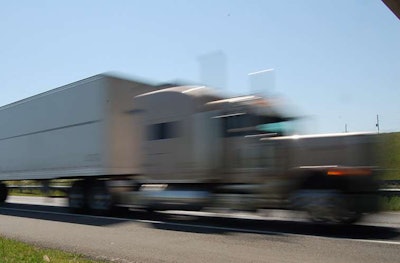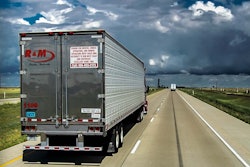
The key argument among proponents is that capping truck speeds will reduce the number of truck-involved crashes. Supporters of a speed limiter mandate also push limiters as a means to increase fuel economy, which would cut carriers’ costs and reduce emissions, advocates say.
Opponents of the rule argue the opposite: Setting maximum truck speeds would increase crash risk by creating unsafe speed differentials between cars and trucks, putting truckers and the motoring public at greater risk. Detractors of the rule also argue a speed governor mandate would create more “rolling roadblocks,” making highways more inefficient and unsafe, and simply make it more difficult for truckers to perform their jobs in an already restrictive regulatory environment.
Many large fleets already voluntarily cap their trucks’ speeds, often in the low to mid 60s. The American Trucking Associations and other advocates of a mandate point to the success of those fleets’ trials as strong evidence for requiring governors on a broader scale. Schneider Chief Executive Mark Rourke, speaking in September at the 2016 FTR Conference, said his fleet has used limits since 2009. Fuel economy has gone up and crashes down in that time span, he said. “The best thing you can do for [fuel economy] and safety is lower speeds,” he said.
A comprehensive study sponsored by the U.S. DOT issued in 2012 seems to back up these claims. The crash rate among trucks without limiters was 16.4 crashes per 100 trucks per year. For trucks equipped with limiters, the crash rate was 11 crashes per 100 trucks per year. The report studied more than 150,000 trucks, who recorded in the 2007-2009 data collection period more than 28,000 crashes.
The study, “Research on the Safety Impacts of Speed Limiter Device Installations on Commercial Motor Vehicles,” also attempted to isolate crashes related to speeding, so-called “speed-relevant crashes.” The crash rate for speed-relevant crashes for trucks with speed limiters was 1.4 crashes per 100 trucks per year. The crash rate for carriers not using the devices was nearly five times as high — 5 crashes per 100 trucks per year.
The DOT in its proposed rule also performed in-depth analysis on the claimed benefits of limiters. Per the DOT’s analysis, a 60 mph limit would prevent between 162 and 498 on-highway deaths a year, a 65 mph limit would see between 63 and 214 deaths prevented, and a 68 mph limit would prevent between 27 and 96 lives a year. All three speeds would prevent thousands of injuries a year, too, the DOT says.
The DOT also touts in its proposed rule the fuel-saving benefits of speed limiters. At 60 mph, tractor-trailers would save between $2,500 and $6,100 a year on fuel, the DOT estimates. At 65 mph, those figures fall to between $1,400 and $3,000, and at 68 mph a tractor-trailer would use between $640 and $1,400 less in fuel, the DOT purports.
The Owner-Operator Independent Drivers Association, the de-facto leader of the anti-limiter pushback, insists the jury’s still out. Though the group has largely ignored the fuel economy claims, they challenge the notion that trucks are safer with speed limiters than without.
For instance, OOIDA points to testimony from Julie Anna Cirillo, who spoke before a Senate committee in 2003 about the dangers of on-highway speed differentials. “Adherences to differential speed limits creates a situation where a significant percentage of traffic is operating much slower than the general traffic. That is always unsafe,” she said. “Traffic operating at or about the same speed, regardless of speed limit, is the safest traffic environment. Jurisdictions should do whatever they can to encourage this operating scenario and should never require the opposite.”
Cirillo said she focused much of her career on studying speed limits, crashes and speed differentials. She worked for the DOT for 34 years, including time as the Chief Safety Officer for FMCSA.
The owner-operator trade and lobbying group also stands behind a review of state to state variations in crashes performed by the National Highway Traffic Safety Administration in 2014. The report shows that in two-vehicle fatal crashes involving trucks and passenger cars, rear-end crashes are the most common. In 2014’s fatal crash data, trucks were struck in the rear in 21 percent of the crashes, compared to just 7 percent in which trucks struck the other vehicle.
Industry stakeholders on both sides of the fence intend to convince the DOT agencies responsible for the rule their side is right during the comment period and subsequent development of a final rule to mandate speed limiters. The 60-day public comment period for the Sept. 7 published Notice of Proposed Rulemaking ends Nov. 7, barring an extension.
To file a formal comment with the DOT on the proposed speed limiter rule, click here.











